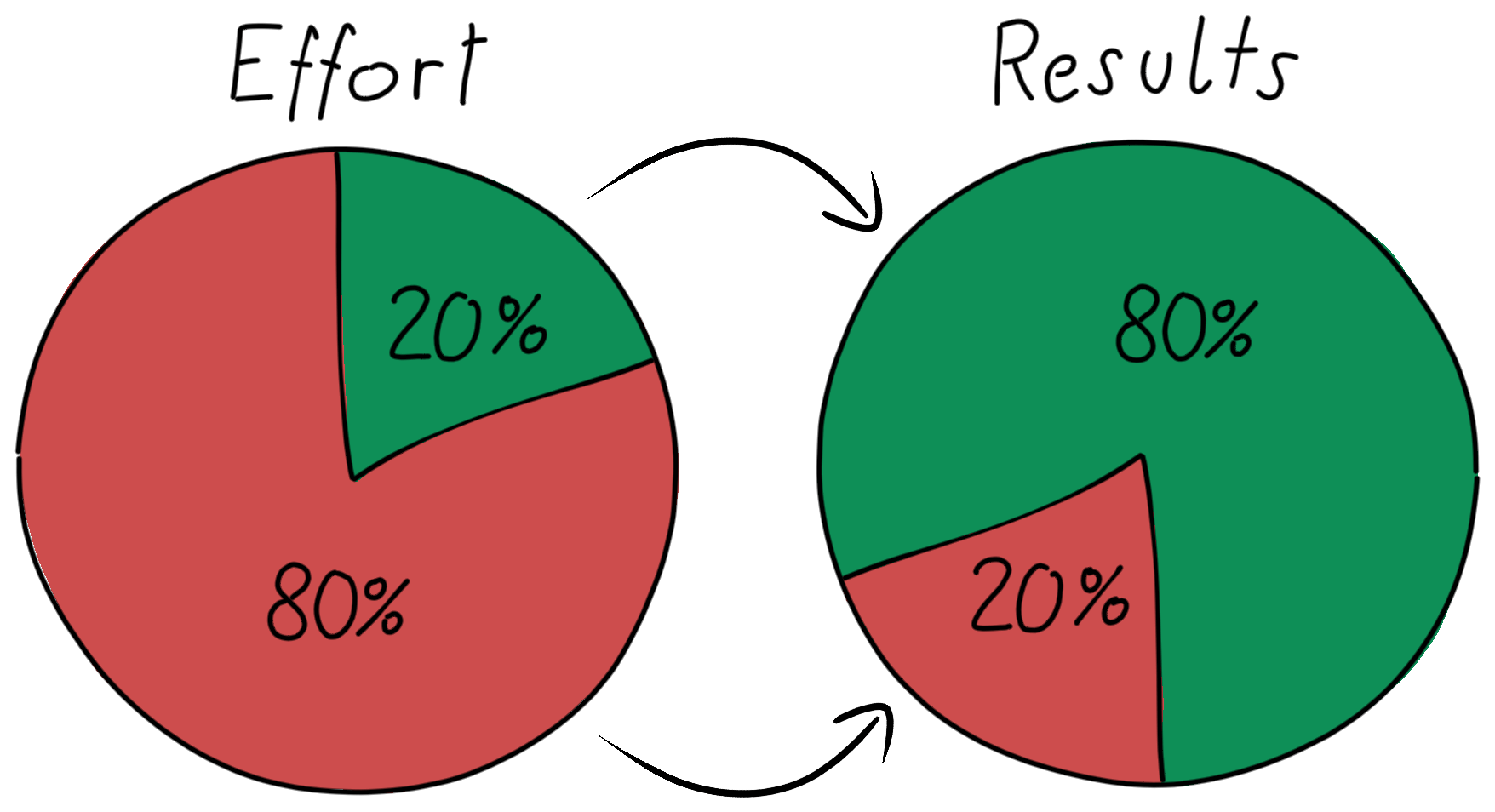You can identify the 80/20 rule in any part of your business. Once you've learned to recognize it, you can't not see it.
It's not the exact number 80/20 that's the rule; it's the principle of positive feedback, which is when behavior is rewarded so that it produces more of the same behavior. Sometimes it's 60/40 or 70/30; sometimes it's 90/10 or 95/5. The exact numbers aren't so important. But it's always there.
Find the small things you can do, in very little time, with very little money or none at all, to have a big impact on the potential customers around you.
You'll easily assign dollar figures and instantly know which opportunities are worth pursuing and which ones waste your time and money.
To see cause and effect in your business as it really is, shift your business thinking.
80/20 says if you hire 10 salespeople, two will generate 80 percent of the sales and the other eight will generate only 20 percent of the sales.
That means the two are SIXTEEN TIMES as effective as the eight. That's right—a good salesperson isn't 50 percent better, he or she is 16X better. That means there's huge leverage in 80/20: much to be gained if you pay attention, much to lose if you don't.
A fifth of your customers are responsible for four-fifths of your profits, or something similar.
Sometimes 20 percent of core customers actually account for fully 100 percent of profits, and the rest you would be better off without them.
20 percent of the 20 percent of customers are ultra-valuable, at least potentially. Four percent of the customers may account, or could account, for 64 percent of profits.
If you know who these customers are and provide them with what they really want, all you have to do is double sales to them and you have another 64 percent of revenues.
Often these sales are not consummated, simply because you don't have the very expensive products that these ultra-valuable customers really want to buy. Sales and marketing, therefore, begins with product development for your very enthusiastic customers.
Of course, you can't charge several times as much for the same product. You have to provide equivalent value, so if a product is 10 times as expensive, give at least 10 times the value.
But very often, it costs you less than 10 times as much to provide that value. And it is certainly easier to grow by selling more to your existing happy customers than it is to find new customers who will love what you do.
Customers are unequal. If you have 30 customers, you're tempted to treat them all the same. Well they're really not the same at all. Odds are, 20 percent of your business comes from just one of them.
This principle of inequality applies to almost everything in your business.
80/20 applies to everything in the world that has positive feedback.
Top performers are not twice as good as average performers. They're more like 100 times better.
Look at your top 20% of customers. How do their demographics differ from the other 80%? What marketing could you implement that would focus on just the top 20% that they would be responsive to?
80/20 isn't a mere rule of thumb, and it's not just for business. It's a law of nature.



Connect with Jesse Grillo online and on Social:












